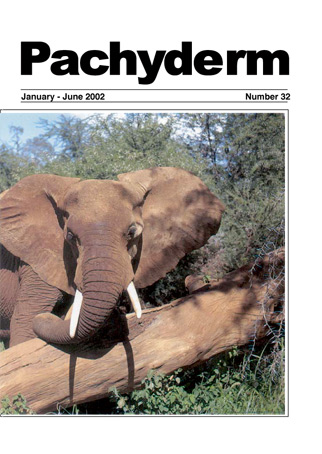Aerial elephant count in the Shimba Hills ecosystem, Kenya
DOI:
https://doi.org/10.69649/pachyderm.v32i1.1086Abstract
Conducted by helicopter in the Shimba Hills ecosystem in August 1997 a one day wet season count observed 464 elephant, and served to verify the estimated 412 obtained through dung counts. 150 of the animals were in Mwaluganje Forest, giving a density of 6 elephant per sq km in this area. The population in the Forest has probably been increasing since the 1950's. Shimba Hills National Reserve itself is enclosed by an electric fence. A wildlife corridor, namely the Mwaluganje Community Conservation Area, joins the Reserve and the Forest but there is no additional habitat/range for this isolated population which is literally surrounded by human habitation and agricultural land. Vegetation damage by elephants in the Shimba Hills ecosystem has reached critical levels in localized areas, and the area's biodiversity may suffer if management action is not taken soon. The author discusses the growth of the population and the differing opinions of researchers who have undertaken previous surveys. He conclusions are in line with a recent consultant's report (Kamanga, 1997) who suggested 200 animals should be removed, and that a density of 0.5 elephants per sq km is probably good for the Shimba ecosystem. Translocation is suggested as an option to consider followed up by a population control immunocontraception programme.
Downloads
Published
How to Cite
Issue
Section
License
Copyright (c) 2002 Moses W. Litoroh

This work is licensed under a Creative Commons Attribution-NonCommercial 4.0 International License.




